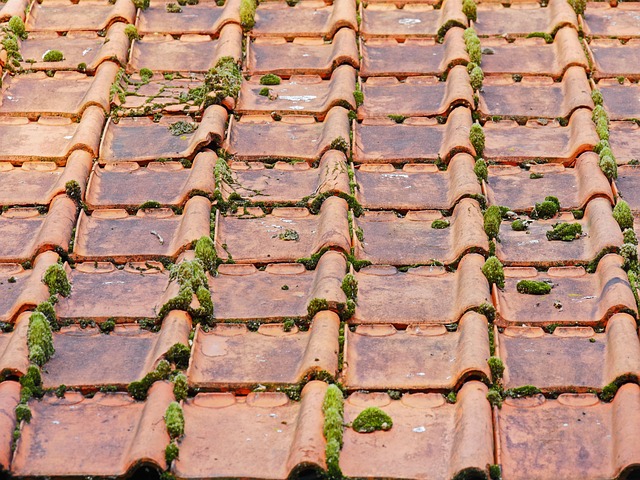Regular roof inspections are vital for maintaining residential roofing systems, preventing costly repairs, and ensuring structural safety. Professional inspectors identify issues like damaged shingles, flashing problems, and water intrusion through detailed assessments of multiple components. Immediate attention to signs of damage is crucial, as prompt repairs extend the lifespan of the roof. Advanced technologies like thermal imaging cameras and drones enhance inspection accuracy. Hiring licensed contractors with a proven track record guarantees accurate evaluations and informed maintenance decisions for optimal rooftop protection.
Roof inspections are an essential aspect of home maintenance, often overlooked yet critical for ensuring structural integrity and protecting your investment. Regular assessments can identify potential issues early, preventing costly repairs. This comprehensive guide delves into the world of residential roofing inspections, covering key components, common problems, and modern technology’s role. Learn when to schedule emergency check-ups, prepare for assessments, and hire credible professionals for thorough, quality roof inspections.
Understanding the Importance of Regular Roof Inspections

Regular roof inspections are an essential part of home maintenance for any residential roofing system. While it might seem like a simple task, scheduling periodic assessments can prevent significant issues and costly repairs in the long run. A professional inspector will thoroughly examine every aspect of your rooftop, from the shingles to the flashing and gutters, identifying potential problems that may be invisible to the naked eye.
By conducting these inspections, homeowners can stay ahead of common roofing issues like leaks, missing or damaged shingles, and structural weaknesses. Early detection allows for timely repairs, ensuring the longevity and integrity of the residential roofing system. Moreover, regular maintenance can also help in identifying signs of wear and tear, which can be addressed before they escalate into major problems, ultimately saving time and money.
Key Components of a Comprehensive Residential Roofing Inspection

A comprehensive residential roofing inspection involves assessing several critical components to ensure the structural integrity and longevity of the roof. Among the key areas to scrutinize are the roof covering materials, which include shingles, tiles, or metal panels. Inspectors look for signs of wear, damage, or loose fixtures that could compromise the protection against weather elements. The condition of the underlayment is also crucial; this layer provides an additional barrier against moisture and acts as insulation.
Other essential components are the flashing and venting systems. Flashing seals joints and openings, preventing water from infiltrating into the roof structure. Venting ensures proper airflow, reducing the risk of damage caused by excessive humidity or heat buildup. Additionally, the inspector will evaluate the state of the gutters and downspouts, ensuring they are clear, well-connected, and functional to divert rainwater effectively away from the foundation.
Common Issues Found During Roof Assessments

During roof inspections for residential properties, several common issues are often discovered. These problems can range from minor defects to more significant structural concerns that require immediate attention. One of the most frequent findings is missing or damaged shingles, which can be due to natural wear and tear or harsh weather conditions. Homeowners should be vigilant about replacing these as soon as possible to prevent water leakage.
Another prevalent issue is poor drainage, typically indicated by clogged gutters or downspouts. Proper drainage is vital for residential roofing to ensure water does not pool on the roof or accumulate around the foundation. Additionally, inspectors often identify problems with flashing, especially around chimneys and vents, where leaks can occur if not sealed correctly. These common issues highlight the need for regular maintenance and prompt repairs to keep a home’s roof in optimal condition.
The Role of Technology in Modern Roof Inspection Practices

In the realm of residential roofing, technology has revolutionized inspection practices, enabling professionals to perform thorough and efficient assessments. Traditional methods often relied on manual examination, but modern tools have elevated the game. Today, roof inspectors utilize advanced technologies like thermal imaging cameras to detect heat discrepancies, indicating potential issues such as leaks or damaged shingles. These devices provide a clear visual of hard-to-reach areas, ensuring no detail is overlooked during an inspection.
Additionally, drone technology has emerged as a powerful ally in the industry. Unmanned aerial vehicles (UAVs) equipped with high-resolution cameras can capture detailed aerial footage of rooftops, offering inspectors a bird’s-eye view. This innovative approach allows for a comprehensive survey, especially in complex or inaccessible structures, ultimately streamlining the inspection process and providing accurate data for homeowners and professionals alike.
When to Schedule an Emergency Roof Check-up

If you notice any signs of damage, it’s crucial to schedule an emergency roof check-up for your residential roofing system. This could include visible leaks, missing or damaged shingles, or any unusual noise coming from your roof during storms. Prompt action is essential as these issues might indicate more severe problems that could lead to extensive damage and costly repairs if left unattended.
Regular maintenance is key in the world of residential roofing. Even if you haven’t noticed any obvious issues, seasonal changes and extreme weather events can take a toll on your roof. An emergency check-up allows professionals to assess the overall condition of your roof, identify potential problems early on, and provide solutions to ensure the longevity and integrity of your home’s protective barrier.
Preparing for Your Home's Roofing Assessment

Preparing for your home’s roofing assessment is a crucial step in ensuring a comprehensive inspection. Start by clearing any debris or obstacles from the roof and gutters, as this facilitates easy access and allows the inspector to accurately evaluate every component. Remove fallen branches, leaves, or any items that might hinder their progress.
Additionally, check if there are any recent repairs or installations on your residential roofing system. Document these with photos for reference during the inspection. This information will help the assessor understand any ongoing work and its impact on the overall condition of your home’s roof.
Hiring Credible Professionals for Quality Roof Inspections

When it comes to roof inspections, hiring credible professionals is paramount for ensuring the quality and accuracy of the assessment. Look for licensed and insured roofing contractors with a proven track record in your area. Reputable professionals will have the necessary expertise to inspect various types of residential roofing systems, including shingles, metal, and flat roofs. They are equipped with the right tools and knowledge to identify subtle issues like missing or damaged shingles, flashing problems, or signs of water intrusion that might be missed by an untrained eye.
Additionally, these professionals will provide detailed reports outlining the condition of your roof, potential problems, and recommended repairs. Their insights can help you make informed decisions about maintenance or replacements, ensuring the longevity and integrity of your home’s structural element—the roof.
